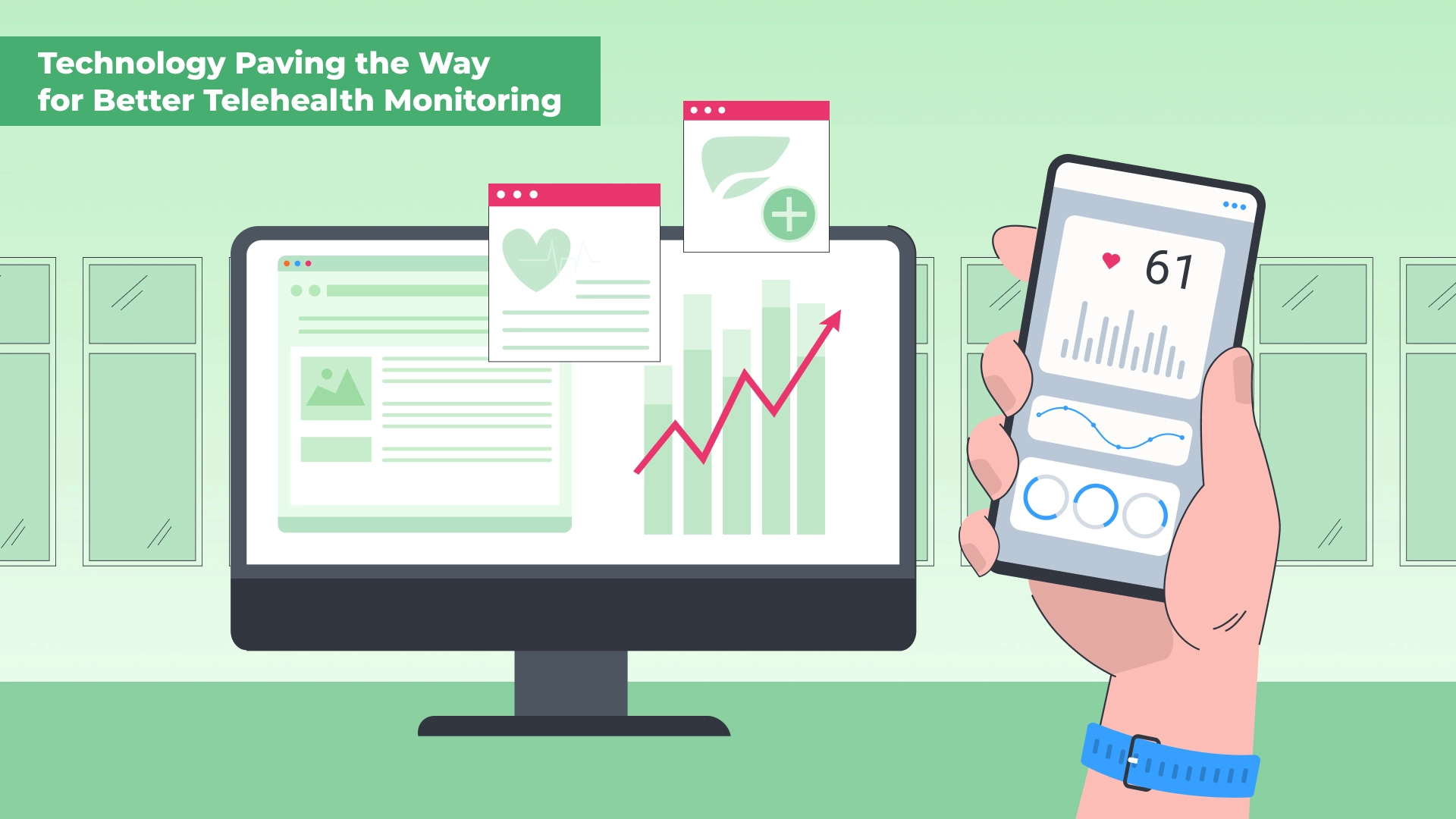

The Future of Telehealth in the Post-Pandemic World
- Telehealth’s Evolution in the Post-Pandemic Era
- Long-Term Impacts of the COVID-19 Pandemic on Telehealth
- The Popularity of Telehealth in a Post-Pandemic World
- Advancements in Telehealth Technology
- Technology Paving the Way for Better Telehealth Monitoring
- Challenges in Telehealth’s Next Phase
- In Conclusion
In the wake of the COVID-19 pandemic, telehealth emerged as a game-changer in the world of healthcare delivery for countless individuals grappling with chronic illnesses, disabilities, and neurodivergent conditions. The ease and convenience it brought to the lives of many who found it challenging to attend in-person appointments cannot be overstated. As we move into a post-pandemic era, it’s crucial to explore the future of telehealth and how it will continue to shape healthcare accessibility, delivery, and patient outcomes.
Telehealth’s Evolution in the Post-Pandemic Era
Telehealth, a term that encompasses the use of telecommunication technology for healthcare delivery, has undergone a remarkable evolution. What began as a necessity during the pandemic is now transitioning into a standard practice for many. Patients have experienced the convenience of remote consultations and virtual care, which has led to increased demand for such services. This shift has prompted healthcare providers to reevaluate their approach to healthcare delivery.
Long-Term Impacts of the COVID-19 Pandemic on Telehealth
The COVID-19 pandemic exposed the vulnerabilities of the healthcare systems and underscored the need for innovation. Telehealth emerged as a resilient solution, bridging the gap between patients and healthcare professionals. It empowered patients to seek care without leaving their homes, reducing the risk of exposure to the virus. The pandemic not only accelerated the adoption of telehealth technology but also brought about lasting changes in the healthcare industry. It demonstrated that telehealth can offer efficient and effective patient monitoring, consultation, and even diagnosis.
The Popularity of Telehealth in a Post-Pandemic World
One of the most pressing questions is whether telehealth will continue to be a popular choice for healthcare delivery after the pandemic. The answer is a “yes, but.” Telehealth has proven its worth in improving healthcare accessibility, especially for those living in remote areas or with limited mobility. But while telehealth has undoubtedly made significant strides, it’s essential to acknowledge the inherent limitations. Some of the telehealth companies that initially found success are now facing certain constraints. The existing models, while convenient and cost-effective, have their downsides. They have subtly shifted the conventional clinical approach from one based on thorough assessment and diagnosis to a more demand-oriented approach. This can, in some cases, lead to the potential overuse of certain medications, indicating a clear need for improvement in the diagnostic process, which often requires direct observation or testing.
Advancements in Telehealth Technology
As telehealth may become more ingrained in the healthcare landscape, it is set to witness continuous technological innovations. Several key advancements are on the horizon:
Virtual Platforms: Telehealth platforms will become more user-friendly and versatile, offering not only video consultations but also integrated tools for secure data sharing, instant messaging, and health record access.
Trends in Patient Monitoring: Remote patient monitoring will evolve with the integration of wearable devices and sensors, allowing real-time data collection and analysis. This will help in the early detection of health issues and the development of personalized treatment plans.
Digital Transformation: The healthcare industry will undergo a digital transformation, embracing electronic health records, data analytics, and artificial intelligence for improved diagnostic accuracy and predictive healthcare.
Solutions for Healthcare Accessibility: Innovations in telehealth technology will address issues of healthcare accessibility, with the development of telemedicine solutions that cater to underserved populations, reducing healthcare disparities.
Technology Paving the Way for Better Telehealth Monitoring

The integration of in-home monitoring technology could potentially revolutionize the telehealth landscape, bringing the clinic experience to the comfort of one’s home. Various devices now enable individuals to conduct certain medical examinations at home, making it easier to monitor health indicators without the need for an in-office visit. With the aid of wearable devices, IoT (Internet of Things) sensors, and AI-powered analytics, healthcare providers can gather real-time data on a patient’s vital signs, activity levels, and sleep patterns. These innovations enable remote monitoring that goes beyond traditional consultations, allowing for proactive and personalized care. The ability to track a patient’s health continuously fosters early intervention, preventing the escalation of health issues and reducing the burden on the healthcare system. Such technology not only empowers patients to take charge of their health but also enables healthcare professionals to deliver targeted and effective interventions tailored to individual needs.
Challenges in Telehealth’s Next Phase
Despite the evident benefits, the path to fully realizing the potential of telehealth is not without its challenges. Resistance from some healthcare providers, coupled with the intricacies of federal and state regulations, continues to impede the seamless implementation of telemedicine. While some temporary measures have been introduced, such as the temporary extension of telehealth services across state lines, the future remains uncertain as these measures are set to expire within the nearest time. The need for a more comprehensive and uniform approach to telemedicine regulation at the federal level has become increasingly apparent.
It is also worth noting the gradual decline in the interest of healthcare providers in delivering telehealth services. Many healthcare professionals remain staunch advocates of in-person care, perceiving it as superior to virtual consultations. This poses a significant challenge in maintaining the necessary balance between in-person and virtual healthcare services, highlighting the importance of integrating in-home monitoring to enhance the quality of telehealth services.
Additionally, issues related to technological infrastructure, including Internet connectivity and accessibility in remote areas, pose a significant challenge to the widespread adoption of telehealth. Overcoming these obstacles will require collaborative efforts among policymakers, healthcare providers, and technology developers to create a robust and inclusive telehealth ecosystem that caters to diverse patient populations.
In Conclusion
The future of telemedicine seems to hinge on finding the right balance between technological innovation and traditional healthcare practices. The integration of in-home monitoring technologies with telehealth services holds great potential to bridge the existing gap. However, for this potential to be fully realized, there is an urgent need for a more cohesive and standardized approach to telemedicine regulation and a shift in the mindset of healthcare providers towards embracing the benefits of virtual care. Only then can we ensure that the advances made in telehealth services are sustained and continue to benefit those in need of accessible and convenient healthcare solutions.
Faq
How will telehealth evolve in the post-pandemic era?
+Telehealth will likely continue to expand its services, integrating advanced technologies such as AI-driven diagnostics and remote monitoring to enhance patient care. With increased regulatory support and improved reimbursement policies, telehealth can become an integral part of the healthcare system, providing accessible and convenient care to a broader population. Moreover, the integration of VR and AR technologies will enable immersive and interactive telehealth experiences, further transforming the way patients and healthcare providers engage in remote consultations.
What are the long-term impacts of the COVID-19 pandemic on telehealth?
+The COVID-19 pandemic has accelerated the adoption and acceptance of telehealth services, leading to a paradigm shift in the healthcare industry. Long-term impacts include the normalization of virtual healthcare consultations, improved access to healthcare for remote and underserved populations, and the integration of telehealth into the standard care continuum. However, challenges such as ensuring equitable access to technology, maintaining patient privacy, and addressing regulatory and reimbursement issues will require ongoing attention to fully maximize the potential benefits of telehealth.
Will telehealth continue to be a popular choice for healthcare delivery after the pandemic?
+Telehealth is likely to remain a popular choice for healthcare delivery post-pandemic due to its convenience and accessibility. However, its sustained popularity may depend on regulatory changes, insurance coverage, and patient preferences. It will likely be integrated into a hybrid healthcare system, offering both in-person and virtual care options.
What advancements in telehealth technology can we expect in the future?
+In the future, we can expect telehealth technology to incorporate more advanced AI-driven diagnostic tools, enhancing the accuracy and speed of remote medical assessments. Wearable devices and remote monitoring solutions will become more integrated, enabling continuous health tracking and early disease detection. Additionally, improved cybersecurity measures will be crucial to ensure the privacy and security of patient data as telehealth adoption continues to expand.
Tell us about your project
Fill out the form or contact us

Tell us about your project
Thank you
Your submission is received and we will contact you soon
Follow us
